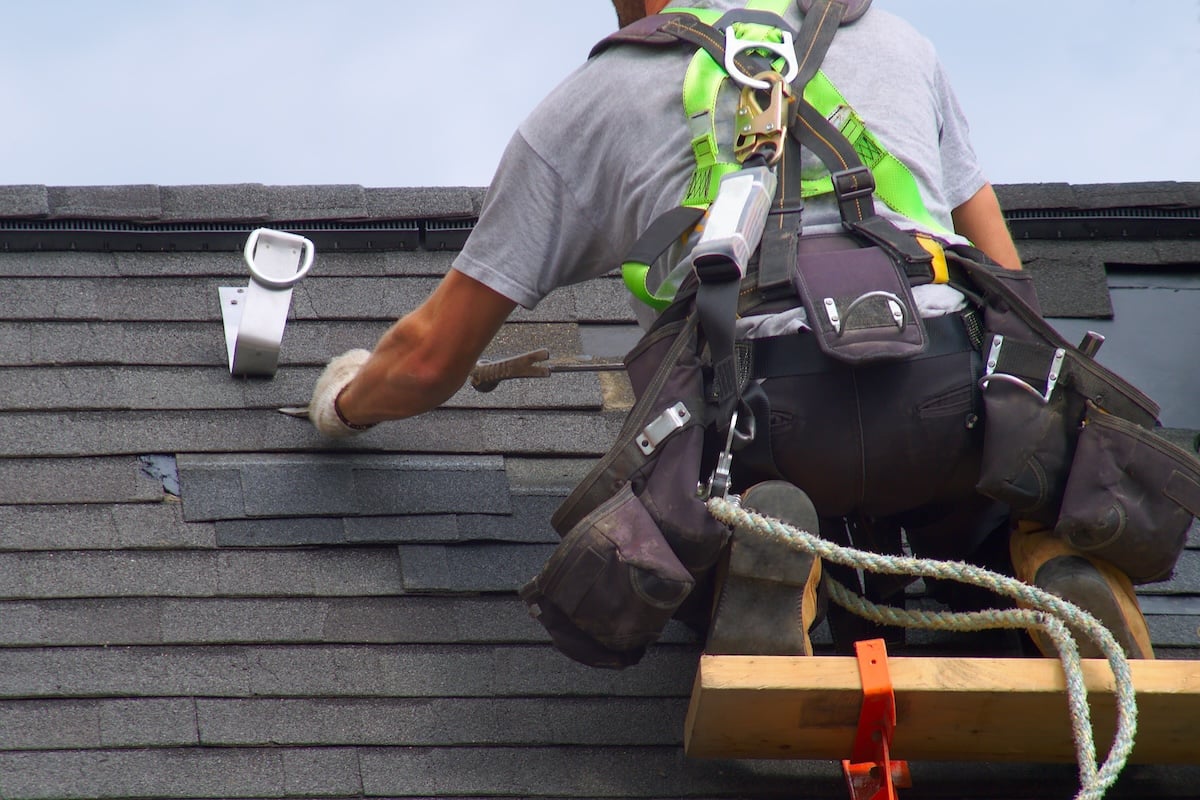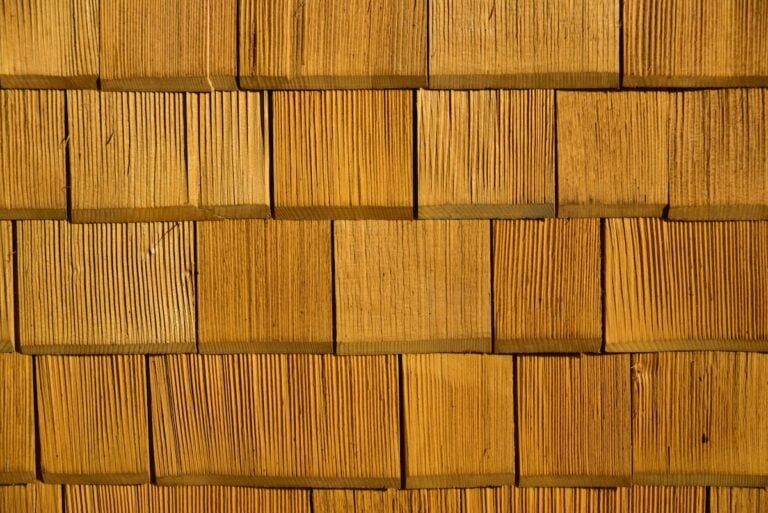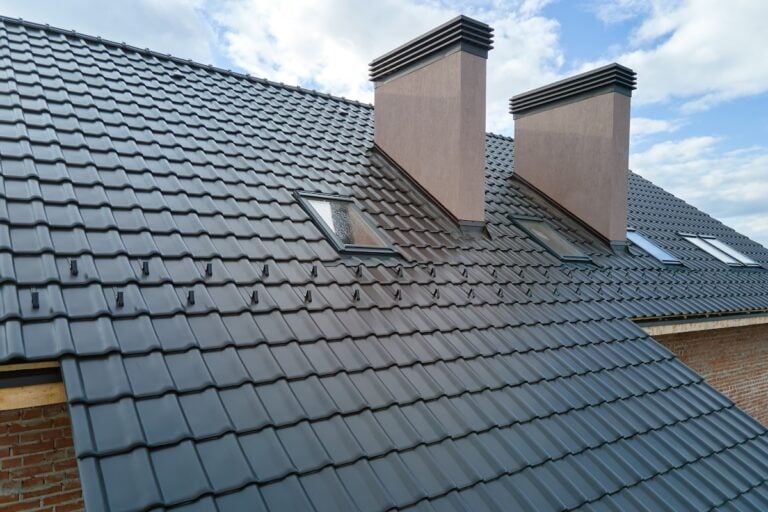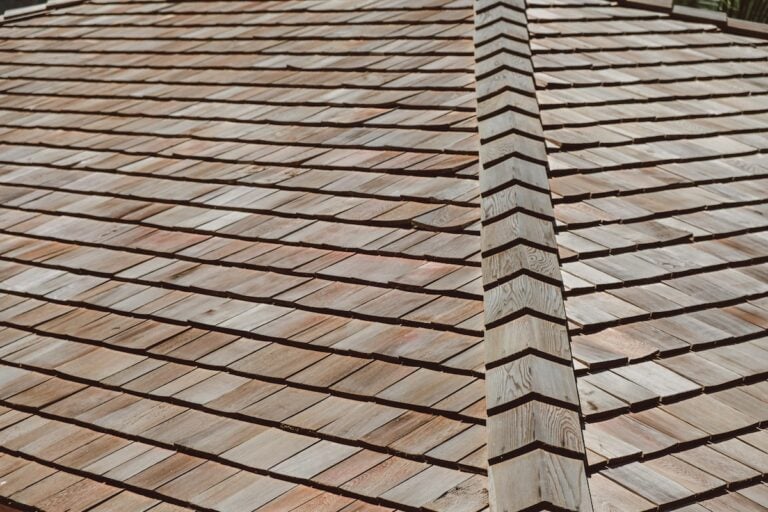If you’re planning any rooftop work, having the right roof safety equipment is essential to protect yourself from serious injuries. Whether you’re cleaning gutters, inspecting shingles, or doing small repairs, safety should always come first. Even a single misstep on a roof can result in life-altering consequences.
In this guide, you’ll learn:
- The most important safety gear to use when working on your roof
- How each piece of equipment helps prevent slips, falls, and accidents
- Tips for using gear correctly and safely
⚠️ Why Roof Work Is Risky
Working on your roof may seem simple—but even experienced professionals follow strict safety protocols. Understanding the risks involved is step one.

Height-Related Dangers
Even a one-story fall can result in broken bones, head injuries, or worse, especially if the fall occurs near concrete, sharp tools, or landscaping features. The risk increases on sloped surfaces, where gravity and momentum make it harder to regain balance. Slick shingles, sudden gusts of wind, or even small missteps can quickly lead to disaster if you’re not properly secured. That’s why stable footing, awareness of surroundings, and reliable safety equipment are absolutely non-negotiable when working on a roof.
Limited Stability
Unlike indoor floors, rooftops are not designed for walking or standing for extended periods. Roofs may include loose granules that shift underfoot, soft or rotting decking that gives way unexpectedly, or algae-covered shingles that become slippery without warning. These unstable conditions can make simple tasks—like removing leaves or checking flashing—dangerous for the average homeowner. Safety gear, along with careful planning and minimal movement, is essential to reduce the risks of working on these unpredictable surfaces.
Environmental Conditions
Weather plays a major role in rooftop safety and can turn an easy job into a hazardous one very quickly. Wet or icy surfaces drastically reduce traction, making it nearly impossible to move safely across sloped areas. In hot weather, roofing materials can become soft, sticky, or dangerously slick, increasing the chance of slips or burns. Moisture issues don’t just make roofs slick—they can also lead to problems like mold on siding that impact your home’s exterior.
👉 7 Essential Pieces of Roof Safety Equipment
Here’s a list of must-have gear every homeowner should use when tackling any type of roofing task:
- Safety harness and lanyard: A body harness, anchored securely to a roof tie-in point, can prevent a serious fall. Choose a system rated for roofing and learn how to wear and clip in properly.
- Roof anchor: This is the fixed connection point for your safety harness. It must be installed correctly and securely fastened to a strong part of the roof’s structure to be effective.
- Non-slip roofing shoes: Specialized shoes with soft, grippy soles provide better traction on sloped or shingled surfaces. Avoid sneakers or work boots with worn treads.
- Extension ladder with stabilizer: A sturdy ladder is your gateway to the roof, and a stabilizer bar helps keep it from slipping or damaging gutters. Always extend the ladder at least three feet past the roofline.
- Hard hat: Falling tools, branches, or debris can cause serious head injuries. A hard hat offers crucial protection when working near roof edges or under eaves.
- Work gloves: Grip and protection are key when handling tools, shingles, or flashing. Gloves also protect your hands from cuts, scrapes, and splinters.
- Fall protection kit: When setting up anchors, always secure them to solid roof trusses to ensure stability and safety.

⭐️ Roof Safety Tips for DIY Homeowners
Even with gear, technique matters. Follow these tips to ensure a safer experience:
- Check weather conditions: Never work on the roof in rain, high wind, or extreme heat. These elements make every step riskier and reduce your reaction time.
- Tell someone before you climb: Let a family member or neighbor know when you’re working on the roof, in case of emergency. Keeping a phone nearby in a secure pocket is also smart.
- Limit how much you carry: Keep tools in a tool belt rather than your hands, and use rope or pulleys to lift larger materials. This keeps your balance and hands free while climbing.
📞 When to Call a Professional
Sometimes, hiring a roofing professional is the safer and smarter choice. Even if you’re comfortable with heights, certain tasks demand more experience or specialized equipment.
Large-Scale Repairs
If the repair involves large sections of the roof, structural work, or working around electrical components like solar panels, leave it to a licensed pro. These jobs often require multiple team members and advanced fall protection systems. If the repair involves large sections of the roof, it’s safer to call roofing experts in Arlington who have the right equipment and training.
Steep or High Roofs
Roofs with a high pitch or multiple levels can be too dangerous for the average homeowner. Professionals use roof jacks, scaffolding, and mechanical lifters to work on steep areas safely and efficiently. For complex roof designs, metal roofing contractors in Alexandria have the tools to work safely and efficiently.
Mold, Rot, or Hidden Damage
If you’re unsure whether your roof is safe to walk on, it probably isn’t. Soft decking or hidden moisture damage can lead to sudden collapses. Professionals know how to test the roof’s integrity before stepping foot on it.

💪 Why Springfield Roofing & Sheet Metal Inc. Puts Safety First
At Springfield Roofing & Sheet Metal Inc., safety isn’t just something we talk about—it’s at the core of how we operate. Our team is trained in OSHA safety standards, and we use professional-grade equipment for every project.
- Certified and insured crews: Every team member is trained in rooftop safety procedures and insured for peace of mind.
- Job site preparation: We assess each roof before starting to identify risk areas and ensure safe access points.
- Top-tier equipment: From harnesses to toe boards, we use the latest tools to protect our crew and your property.
- Commitment to education: We believe homeowners should understand roofing safety, whether they hire us or take on simple tasks themselves.
🦺 Stay Safe—Or Leave It to the Pros
If you’re considering rooftop maintenance or inspection, don’t underestimate the importance of roof safety equipment. A few basic tools and precautions can make all the difference between a successful job and a serious accident. After severe weather, don’t risk climbing up yourself—our team provides storm damage roof repair in Great Falls with safety as the top priority
Contact Springfield Roofing & Sheet Metal Inc. today if you’re unsure whether a project is safe to handle alone. Our team is here to inspect, repair, or guide you through any roofing needs with professionalism and care.






